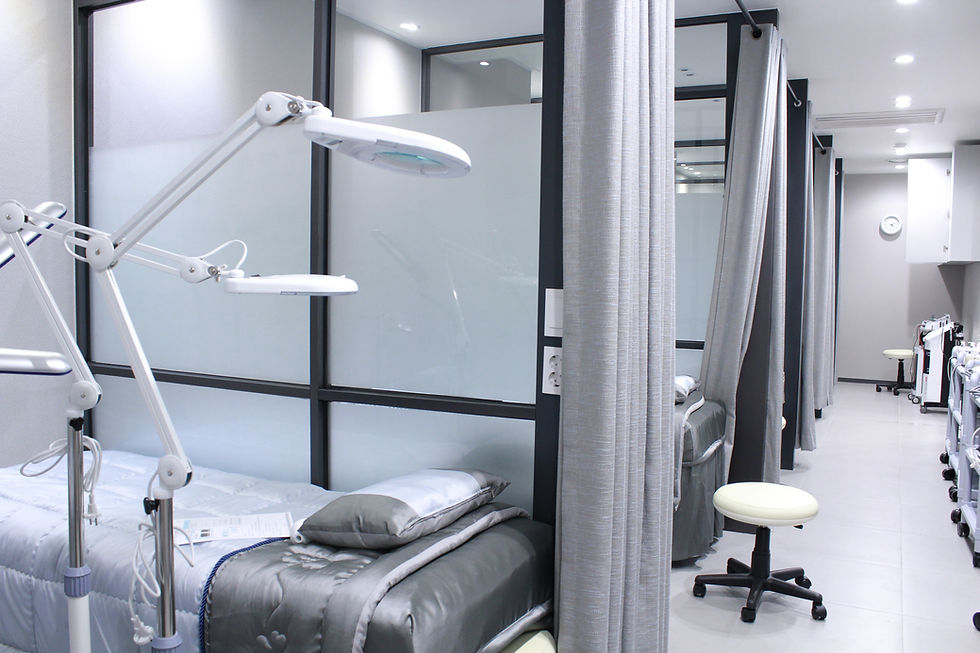The Smart Chiropractic Revolution: How Tech is Transforming Care
- Dr. Lucas Marchand

- Mar 6
- 3 min read
The House Call Reimagined

In the 1920s, a doctor’s black bag and a house call were the pinnacle of personalized care. Fast forward to today, and healthcare has evolved in ways those early physicians couldn’t have imagined. Smart hospitals—equipped with AI, automation, and IoT (Internet of Things)—are revolutionizing patient care, making it more proactive, predictive, and precise. But these innovations aren’t just for hospitals. Mobile chiropractic care, often seen as traditional and hands-on, stands at the threshold of its own technological transformation.
Imagine this: Instead of simply responding to pain, your chiropractor anticipates it. Your body’s movement data signals potential strain before you even feel discomfort. Your next adjustment is scheduled not when the pain arrives, but before it does. This is the future—one where smart technology meets hands-on healing.
The Smart Hospital Concept: What It Means for Healthcare

From Reactive to Proactive Care
Traditional healthcare waits for symptoms; smart hospitals leverage technology to predict and prevent issues before they escalate. AI-driven predictive analytics, real-time remote monitoring, and automation are making care more efficient and personalized.
For chiropractors, the lesson is clear: Waiting for patients to call when they’re in pain is outdated. Instead, technology can help predict when they might need care, offering a proactive approach to spinal health.
(For more on proactive spinal health, see:
Bringing Smart Tech to Chiropractic: A House Call, Upgraded

1. AI-Powered Scheduling: More Than Just an Appointment Reminder
Smart hospitals use AI to schedule surgeries and optimize resource allocation. Mobile chiropractors can apply the same concept. AI-driven scheduling tools analyze patterns in patient visits, predict when a follow-up is due, and send timely reminders. Instead of waiting for pain to return, your chiropractor might send a nudge: “Based on your history, it’s time for your next adjustment.”
It’s like having a personal assistant for your spine, ensuring your body stays aligned before discomfort sets in.
2. Automated SOAP Notes & Voice Dictation: Freeing the Chiropractor’s Hands
Documentation is the Achilles’ heel of healthcare providers. Chiropractors, like surgeons, need to focus on hands-on work rather than tedious paperwork. AI-powered voice dictation tools can transcribe patient interactions, summarizing key points instantly.
Imagine a surgical assistant anticipating the next instrument. Smart documentation does the same—recording notes seamlessly, allowing chiropractors to focus entirely on patient care.
3. IoT-Connected Chiropractic Tables & Wearables: Real-Time Patient Insights
Hospitals use IoT devices to track vital signs. What if your chiropractic table could do the same? In the near future, tables might detect posture imbalances, measure spinal pressure, and offer real-time feedback.
Pair this with wearable technology—like Oura, Whoop, or an Apple Watch—and chiropractors could gain deeper insights into a patient’s sleep, movement, and stress levels. Your watch might flag that poor sleep has tightened your neck muscles, prompting a proactive chiropractic adjustment.
Related:
4. Predictive Analytics: Knowing When You’ll Need an Adjustment
Hospitals use AI to predict patient deterioration. Chiropractors could do the same by analyzing movement patterns, past injuries, and posture data to predict when an adjustment is needed.
Think of it like a check engine light for your spine—preventing breakdowns before they happen.
5. Virtual Consultations & AI-Powered Rehab Guidance
Hands-on care is essential for chiropractic adjustments, but AI-driven virtual consultations could supplement in-person visits. Patients could receive guidance on stretches, posture corrections, and lifestyle habits through smart platforms, reducing unnecessary visits while maintaining engagement.
Imagine a GPS recalculating based on real-time traffic—AI-powered rehab adapts in the same way, ensuring patients stay on track.
6. Smart Payments & Seamless Checkouts: Goodbye to Billing Headaches
Nobody enjoys the friction of outdated payment systems. Mobile payments, card-on-file options, and subscription-based care models can make chiropractic visits as seamless as a Netflix subscription.
For chiropractors, this means less time handling payments and more time focusing on patient care.
The Future: A Smarter, More Personalized Chiropractic Experience
As smart hospitals continue refining patient care through AI and automation, chiropractors can apply these lessons on a smaller scale. The result? A practice that is not just reactive but anticipatory—one that leverages technology to enhance the human touch, rather than replace it.
The future of healthcare isn’t in large, impersonal institutions—it’s in smarter, more accessible, and deeply personalized care. Chiropractic, with its hands-on approach and patient-centered philosophy, is perfectly positioned to lead the way.
Final Thought: The 1920s doctor had a black bag. Today’s chiropractor has AI, wearables, and predictive analytics. The tools have changed, but the mission remains the same: delivering care that’s timely, personal, and effective.





Comments